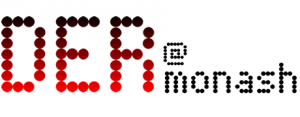Author:
Neil Selwyn (Monash University)
 As someone interested in the everyday realities of educational technology, I have become a keen viewer of student-produced videos on YouTube depicting schools and computers. These videos obviously do not provide a wholly representative picture of schools and schooling in the digital age. What kind of student, after all, would bother filming themselves successfully researching an assignment online or quietly using a VLE? Instead, these videos tend to focus on the transgressive, illicit underbelly of students’ encounters with technology in school – in other words, what kids get up to with computers when their teachers are not watching. Although easy to ignore or condemn, these behaviours are an important element of understanding the complexities of education and technology (see Hope 2007, Bulfin 2009). That said, developing a good insight into these activities usually eludes all but the most determined of education researchers.
As someone interested in the everyday realities of educational technology, I have become a keen viewer of student-produced videos on YouTube depicting schools and computers. These videos obviously do not provide a wholly representative picture of schools and schooling in the digital age. What kind of student, after all, would bother filming themselves successfully researching an assignment online or quietly using a VLE? Instead, these videos tend to focus on the transgressive, illicit underbelly of students’ encounters with technology in school – in other words, what kids get up to with computers when their teachers are not watching. Although easy to ignore or condemn, these behaviours are an important element of understanding the complexities of education and technology (see Hope 2007, Bulfin 2009). That said, developing a good insight into these activities usually eludes all but the most determined of education researchers.
In this sense, YouTube offers a fascinating glimpse into the digital ‘dark-side’ of schools around the world. One sizable genre of videos involve students showing off self-authored ‘hacks’ intended to compromise the integrity of school IT systems in various ways. These include ‘how-to’ guides for crashing school networks, deleting system files, denying teachers’ access rights and altering passwords or grades. Another type of film depicts occasionally amusing computer-related ‘pranks’ – often involving the remote control of computers, disrupting other students’ work or surreptitiously filming people in computer rooms and labs. More elaborate examples involve the intentional destruction and disruption of school computing resources. A further group of videos detail the various technological shortcomings and digital ‘fails’ of schools. These often take the form of mock-incredulous exposes of the ‘ancient’ technologies that can still be found in classrooms, or ad hoc demonstrations of malfunctioning machines.
So what can these examples of student-generated-content tell us about schools and digital technology? For a start, these videos highlight the mundane, non-too-spectacular nature of twenty-first century digital education. They also suggest that digital technology is being ‘read’ by some students as a temporary escape from the boredom of classroom life and a ready means to engage in what educationalists might describe as ‘deviant’ behaviour. These videos also offer an insight into the identity politics of contemporary male adolescence (it is telling that nearly all of these videos appear to be made by boys rather than girls). This is especially apparent in the videoed ‘hacks’ where students boast proudly of their programming expertise and coding skills. The comments that are posted in response to these films are usually replete with disparaging remarks from other students, gleefully pointing out the errors and deficiencies of the wannabe ‘hacker’ in question while also asserting their own technological superiority.
Undertaking a thorough and rigorous analysis of these accounts of school technology on YouTube would undoubtedly be a worthwhile addition to the academic literature on schools computing (if nothing else it would surely be a neat topic for a higher degree dissertation). So, if anyone does have the time, energy and inclination to explore these data properly, then do get in touch once you have completed your analysis – I would be genuinely interested to see what emerges! Education researchers are increasingly implored to recognize the value of student-created content – especially as a means of enabling expression of ‘learner voice’. Here, then, is a potential treasure-trove of such evidence on the realities of schools and computers that is waiting to be examined. Time to get viewing!
References
- Bulfin, S. (2009) ‘Cyber‐savvy students and industrial‐era schools? Disassembling and recasting the new homeschool mismatch hypothesis’ paper presented at the Australia Association for the teaching of English (AATE) Conference, Tasmania, July 9‐12
- Hope, A. (2007) ‘Risk-taking, boundary-performance and intentional school internet ‘misuse’’ Discourse 28, 1, pp 87-99







